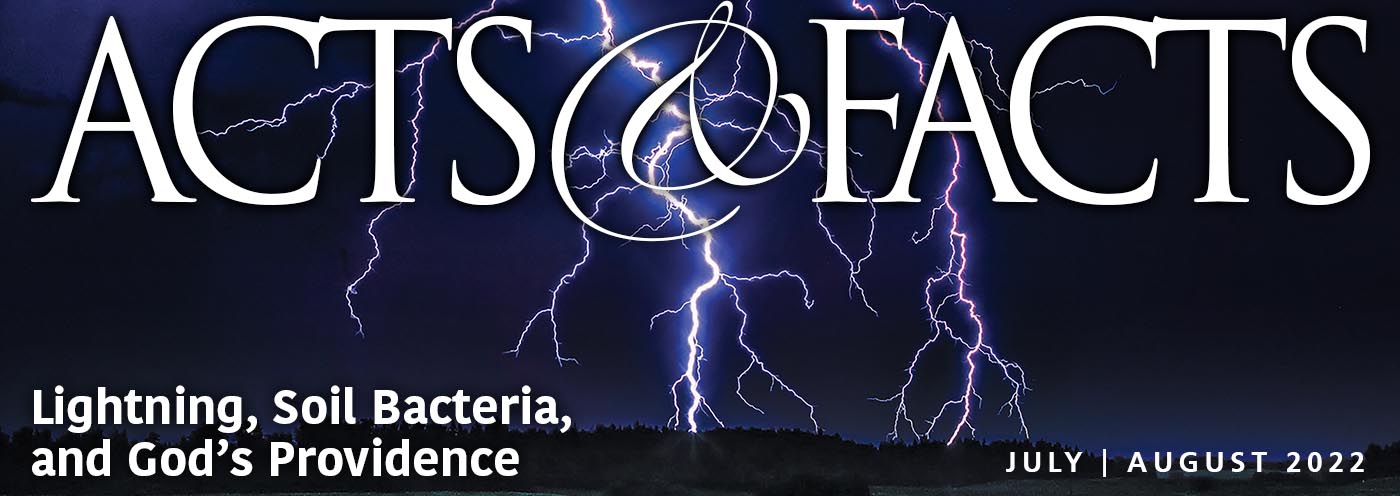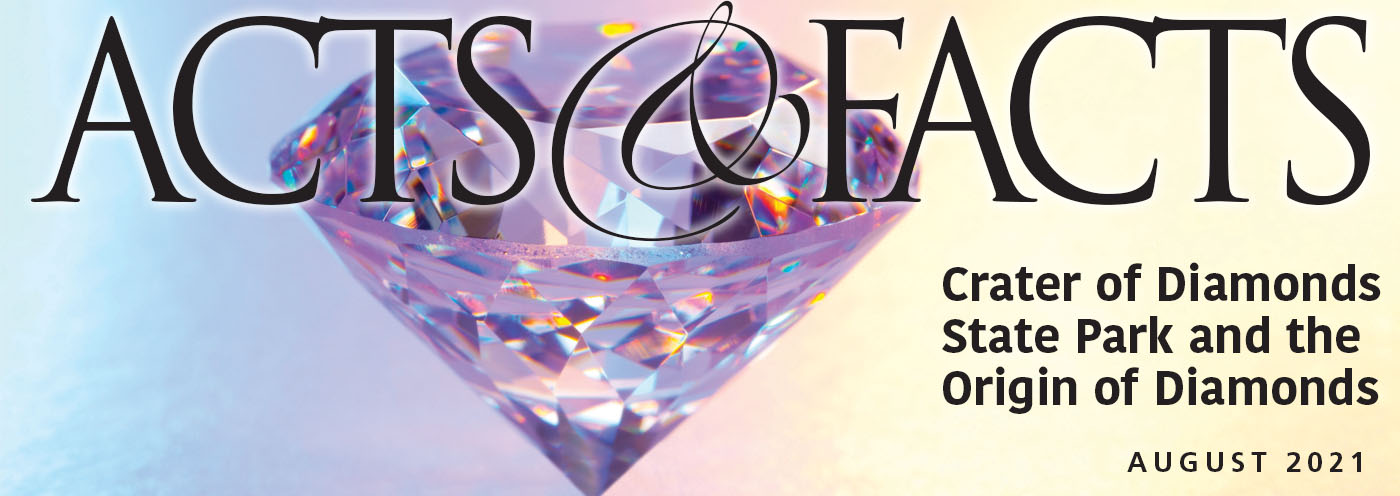A new book on tree rings—Valerie Trouet’s Tree Story—blends some serious tree science with some uniformitarian mythology. The book is being heavily promoted by Johns Hopkins University.1 Aimed at young readers, it will indoctrinate children into the same old mythology about trees, implying that tree ages can be determined by counting growth rings.1,3
Once you look at trees through the eyes of a dendrochronologist, you never quite see the leafy wonders the same way again. Peel away the hard, rough bark and there is a living document, history recorded in rings of wood cells. Each tree ring pattern of growth is unique, as the width of a ring depends on how much water was available that year.2
Trees possess a series of rings that correspond to annual cycles of growth, which are determined by atmospheric and climatic events. To the untrained eye, the rings of a favourite garden tree stump might elicit nothing other than childhood memories of laboriously counting. … [For example] there is Methuselah, the 4,789-year-old [sic] sage of the Ancient Bristlecone Pine Forest; and countless other trees which have stood witness to the events in our history books.3
But wait—how can a living tree be 4,789 years old? If that age calculation is precisely accurate, and is compared to the Bible’s chronology data, then would that mean this Methuselah tree somehow survived Noah’s Flood?4
No eyewitness told us the Methuselah tree’s age, so this conclusion about the no-longer-observable past must be based on some other age-counting method—and it was.5 The age was assumed based upon tree ring growth, relying upon the assumption of “annual growth ring” uniformity, which is critical to the secular dendrochronologist’s version of uniformitarianism.
The big assumption here is that tree rings are “annual” (yearly)—each identifiably distinct ring is deemed a year of growth. Thicker rings are assumed to represent rain-abundant years; thinner rings are supposed to show years of less rainfall.
And so those who review or promote Trouet’s Tree Story repeat the same story, that tree rings are annual growth indicators.1-3 But is this an outdated error? Should up-to-date tree scientists, and elite academic institutions like Johns Hopkins University, be popularizing the annual-growth-ring concept?
No, says Dr. John Morris, who reports on tree growth research by Dr. Geoff Downes, a veteran tree physiologist and dendrochronologist.
Of course, trees don’t talk to humans—so trees can’t report which years it didn’t produce any growth rings.
Likewise, no tree can tell you which years had on-and-off weather conditions that facilitated growing multiple growth rings within one year.7
In other words, how would you know which years are exceptional, and thus are not represented by exactly one growth ring?
And what is the result of all these long-timeframe studies on growing trees, where weather factors are artificially varied as experiments?
Ironically, the weather patterns immediately after the Genesis Flood were anything but uniform when compared to our normal climate patterns. That would make quite a difference in growth ring production in trees that germinated in the centuries immediately following the Flood.6,7
So, children can expect to be taught that tree rings are uniformly grown, and that a tree’s true age can be reliably measured by treating each growth ring as indicating a new “year” of life, like counting birthdays.
This is another example of evolutionists using empirical science methods (with a uniformitarian assumption) as they try to reconstruct unique events of the past. They do this apart from adequate reliance upon forensic science evidence standards—such as using observations of eyewitness-report-based records, corroborated (or refuted) by physical evidence that can be seen in the present.5
Lamentably, to those with evolutionary blind-spots, the big-picture forest seems to get lost among the trees.
References
1. Trouet, V. 2020. Tree Story: The History of the World Written in Rings. Baltimore, MA: Johns Hopkins University Press.
2. Gramling, C. ‘Tree Story’ explores what tree rings can tell us about the past. ScienceNews. Posted on sciencenews.org June 1, 2020, accessed June 2, 2020.
3. Dykes, J. TREE STORY: The History of the World Written in Rings by Valerie Trouet Book Review. Geographical. Posted on geographical.co.uk May 22, 2020, accessed June 2, 2020.
4. Thomas, B. 2018. When Did Noah’s Flood Happen? Acts & Facts. 47(3): 20. See also Johnson, J. J. S. 2008. How Young Is the Earth? Applying Simple Math to Data in Genesis. Acts & Facts. 37(10): 4-5.
5. Researching no-longer-observable events of the past, especially unique events (such as the birthdate of a human or the age of a tree) can become a quagmire of error, quickly, unless there is a reliable witness’s report. See Job 38:4. See also Johnson, J. J. S. 2018. Viking Bones Contradict Carbon-14 Assumptions. Acts & Facts. 47(5): 212.
6. Morris, J. D. 2012. Tree Ring Dating. Acts & Facts. 41(10): 15. Citing Downes, G. 2010. Tree Rings, Dating, and Changing Climates. Creation Ministries International. DVD.
7. When more than one growth ring occurs within a year, the “extra” rings are called a fancy name: intra-annual density fluctuations (or IADFs)—nicknamed “false rings” or “double rings.” This amounts to a verbal dodge to avoid admitting that multiple growth rings can occur within a year, so simply counting growth rings cannot guarantee a correct count of a tree’s age. See, e.g., Copenheaver, C. A., H. Gärtner, et al. 2010. Drought-triggered False Ring Formation in a Mediterranean Shrub. Botany. 88(6): 545-555. See also, e.g., De Micco, V., M. Saurer, et al. 2007. Variations of Wood Anatomy and δ13C Within-Tree Rings of Coastal Pinus pinaster Showing Intra-Annual Density Fluctuations. International Association of Wood Anatomists Journal. 28(1): 61-74.
*Dr. Johnson is Associate Professor of Apologetics and Chief Academic Officer at the Institute for Creation Research.







